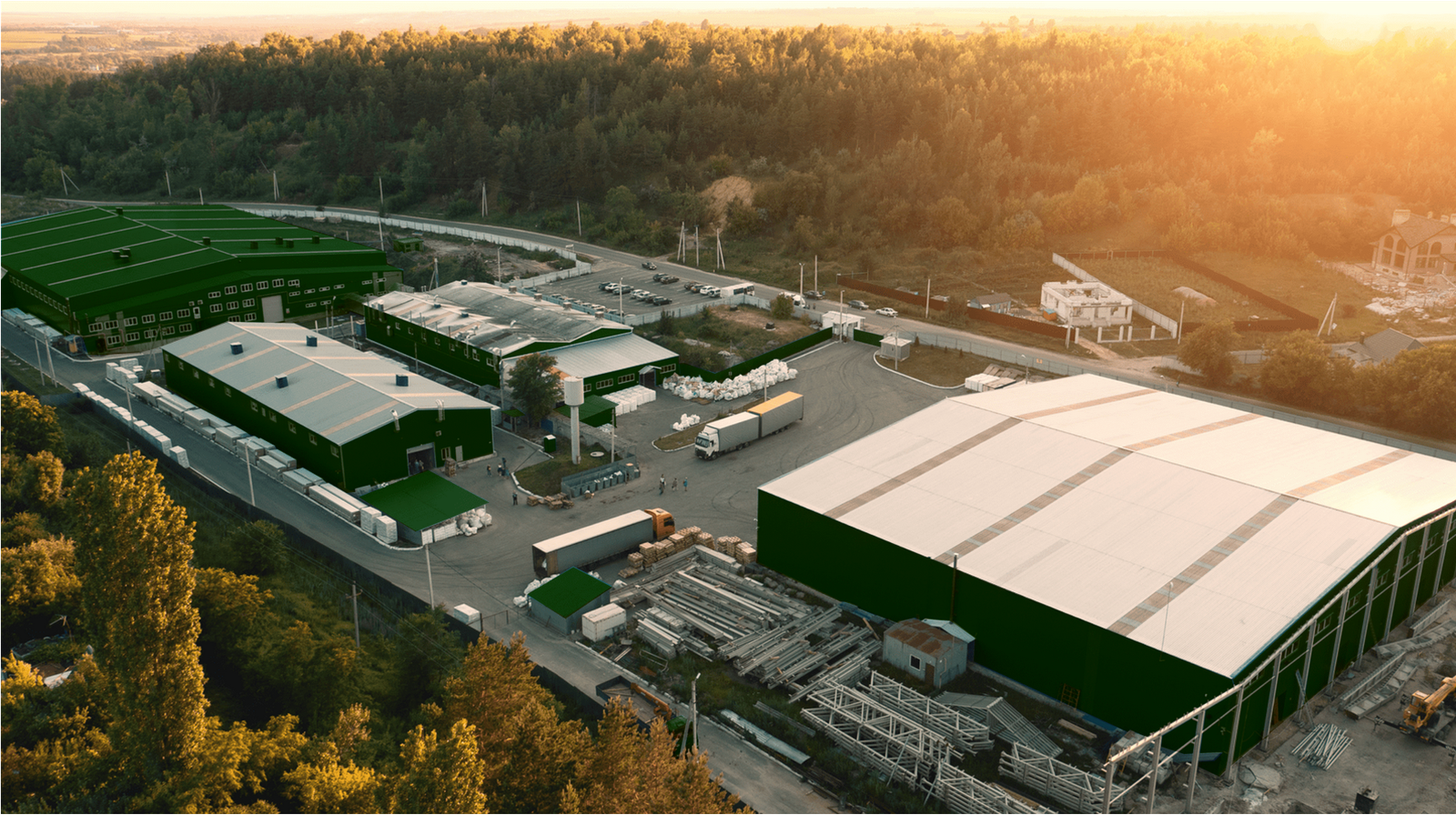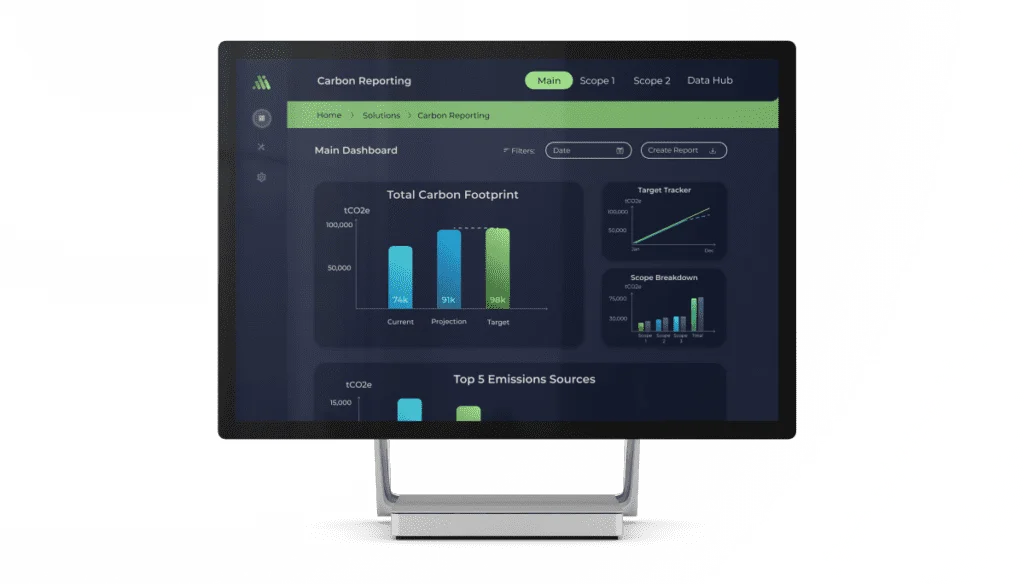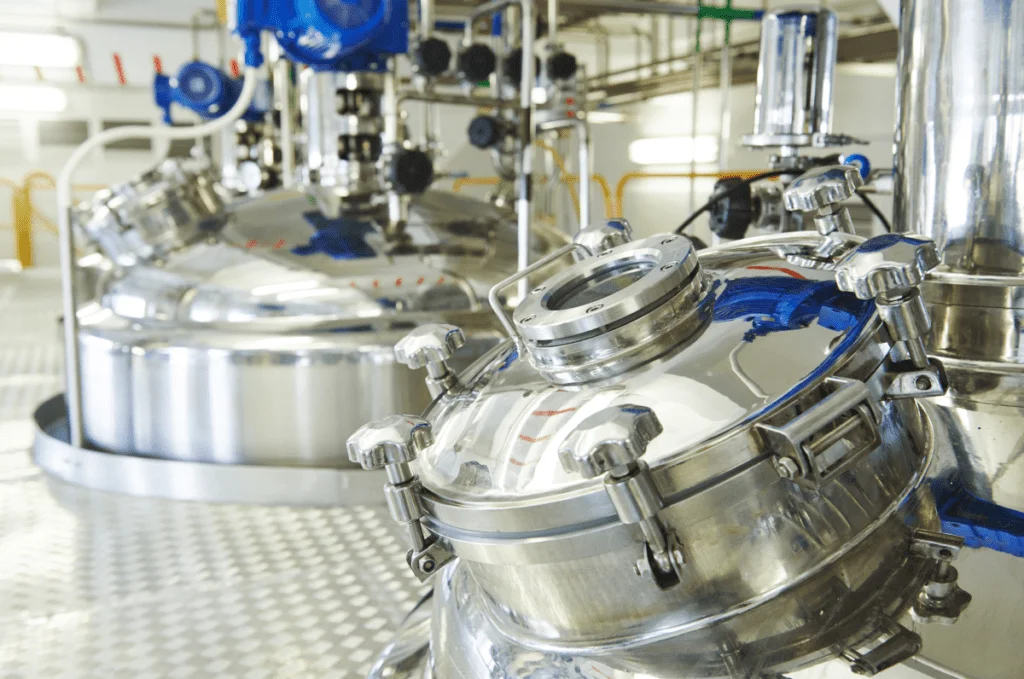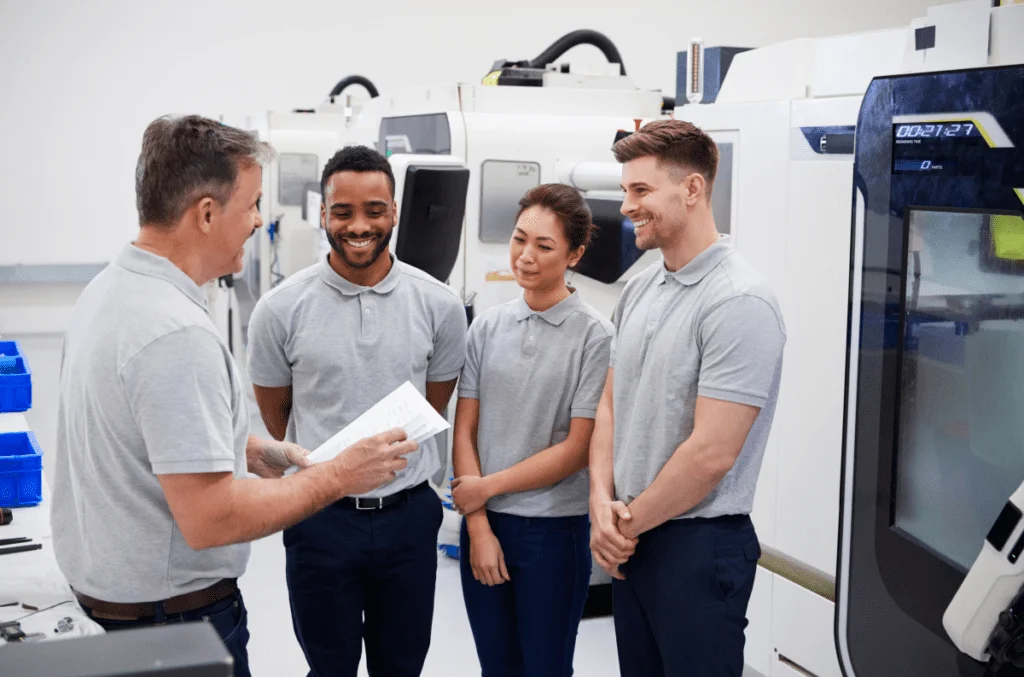

Why Is Sustainability and Carbon Reporting Important in Manufacturing?
Table of Contents
- Understanding Sustainability and Carbon Reporting in Manufacturing
- Role of Sustainability and Carbon Reporting in Modern Manufacturing
- Why should Manufacturers Care about Sustainability and Carbon Reporting?
- How to Increase Manufacturing Revenues through Sustainability Compliance?
- Sustainability and Carbon Reporting: Policies & Regulations
- The Challenges and Opportunities of Carbon Reporting
- Challenges:
- Opportunities:
- Best Practices for Effective Sustainability and Carbon Reporting
- Types of Carbon and Sustainability Reporting for Manufacturers
- Scope 1, 2, and 3 Emissions
- Resource Efficiency
- Renewable Energy Use
- Circular Economy Metrics
- Social Impact and Governance
- Sustainability and Carbon Reporting for SMEs
- Corporate Sustainability Reporting
- Summing it up
- Frequently Asked Questions (FAQs)
Sustainability and carbon reporting are topics that have shifted from optional to absolutely essential. The urgency around sustainability and carbon reporting has hit a tipping point—what used to be a “nice-to-have” is now a “must-do” for every forward-thinking manufacturing business. This piece highlights the compelling data and evidence that demonstrate why transparency and accountability in carbon emissions are essential for future-ready manufacturing businesses.
Did you know?
The latest findings from KPMG reveal that sustainability reporting has grown steadily, with 79 percent of leading companies providing sustainability reports. Moreover, sustainable companies have outperformed their competitors by 28%?
This isn’t just an ethical imperative; it’s an economic one. Investors, consumers, and regulatory bodies are all pressing for transparency, with the stakes getting higher every day.
And here’s another stat to keep you thinking: According to the Global Reporting Initiative, (GRI) 73% of CEOs say that sustainability is key to their long-term success. highlights that a significant portion of the world's largest companies (G250) use GRI Standards for their sustainability reporting, indicating a strong commitment to sustainability practices among major corporations
But while the motivation is there, the path forward isn’t always clear. This blog isn’t about the "why" of sustainability alone; it’s about the "how" and "what" that can empower manufacturers to make meaningful, measurable strides. We’re covering everything from global regulations to best practices, with a spotlight on the companies leading the charge.
So, as you read on, remember this isn’t just a report—it’s a roadmap to future-proofing your business and embracing the opportunities that come with transparency.
Let’s get started.
Here is what you’ll learn in this guide:
- Understanding Sustainability and Carbon Reporting in Manufacturing
- Role of Sustainability and Carbon Reporting in Modern Manufacturing
- Why should Manufacturers Care about Sustainability and Carbon Reporting?
- Policies & Regulations Regarding Sustainability and Carbon Reporting
- The Challenges and Opportunities of Carbon Reporting
- Best Practices for Effective Sustainability and Carbon Reporting
- Types of Carbon and Sustainability Reporting for Manufacturers
- Sustainability and Carbon Reporting for SMEs
- Corporate Sustainability Reporting

Understanding Sustainability and Carbon Reporting in Manufacturing
Sustainability in manufacturing is all about smart, responsible practices that cut environmental impact, save resources, and boost efficiency—think less waste, smarter energy use, and sourcing that’s kinder to the planet. Carbon reporting is a big piece of the puzzle, helping companies track greenhouse gas emissions from production to supply chains. With this insight, businesses can set clear, impactful goals to shrink their carbon footprint and drive a future that’s as sustainable as it is successful.
For example:
Unilever has made substantial progress in sustainability and emissions reduction across its supply chain and has set ambitious carbon goals, which they report annually. This transparency enhances their reputation and creates competitive advantages, though it also requires ongoing commitment and adaptation to maintain these standards. As of 2024, the company achieved a 74% reduction in operational greenhouse gas (GHG) emissions from a 2015 baseline, primarily through transitioning to renewable electricity.
This shows that implementing sustainability and carbon reporting positively helps manufacturers meet regulations, build brand trust, and reduce costs through efficient processes.
However, challenges like data accuracy, especially with complex supply chains, and initial investments in sustainable technology are major hurdles when sustainability and carbon reporting are concerned. When done right, sustainability creates a strong competitive edge, positioning companies as leaders in a market driven by eco-conscious consumers and investors.

Role of Sustainability and Carbon Reporting in Modern Manufacturing
Sustainability and carbon reporting have become central to modern manufacturing, helping companies reduce environmental impact, meet regulatory requirements, and enhance their brand reputation.
By tracking and disclosing direct and indirect emissions, manufacturers gain insights that drive more efficient processes, reduce waste, and conserve resources. This proactive approach not only prepares companies for stricter global regulations but also aligns them with consumer and investor expectations for environmental responsibility. Learn about the benefits of carbon accounting software in streamlining this process in our Double Materiality Guide.
Several businesses exemplify the success of sustainability in manufacturing.
- Tesla, integrates sustainability into its entire manufacturing process, from producing electric vehicles to building energy-efficient Gigafactories designed to operate on renewable energy (Tesla Impact Report).
- Siemens aims for a 90% reduction in Scope 1 and 2 emissions by 2030 and net-zero across its value chain by 2050, validated by the Science Based Targets initiative (SBTi). This commitment reinforces Siemens' leadership in decarbonisation and support for customers’ sustainability goals.
- Nike has made significant progress by investing in renewable energy sources and waste reduction within its supply chain.
These companies show that sustainability and carbon reporting aren’t just responsible choices—they’re essential strategies for long-term success in manufacturing.

Why should Manufacturers Care about Sustainability and Carbon Reporting?
Manufacturers have more than just a “green” incentive to care about sustainability and carbon reporting—these practices are essential for business success. As consumer demand for eco-friendly products grows, sustainability has become a competitive edge. Often companies with sustainable practices outperform their peers, attract investment, and build lasting brand loyalty. Moreover, as global regulations tighten, carbon reporting is key to staying compliant and resilient.
By embracing sustainability, manufacturers find cost-saving efficiencies, like reducing energy use and waste. Carbon reporting provides the data needed to set impactful goals, building trust with eco-conscious stakeholders who demand accountability. Sustainability and carbon reporting aren’t just good for the planet—they’re smart business.
Companies can achieve compliance and gain competitive advantages through transparency. See how carbon reporting software can make the process more manageable in our Data Quality in Carbon Accounting Blog.
How to Increase Manufacturing Revenues through Sustainability Compliance?
There are two main ways to increase revenue through sustainability in manufacturing leadership. The first is to sell more products by appealing to customers and consumer sentiment, and the second is to win more contracts as a sustainable supplier within a value chain by having a structured supplier engagment strategy in place.
As mentioned previously, 93% of Europeans agree that climate change is a serious threat to the planet. A 2020 IBM study found that 77% of consumers say that it’s important for brands to be environmentally responsible. As we move forward, we will see more and more consumers looking to sustainability as a factor in purchase decisions. And this pressure will be placed on those within the value chain. Consumers have been shown to prefer sustainably produced goods when presented with a choice.
The trend towards preferential treatment of sustainably produced goods will accelerate as more goods include sustainability as part of their product passports. The EU recently adopted the Circular Economy Package, which includes a provision to ensure sustainability is included in Digital Product Passports. The upshot, of course, is that sustainability in manufacturing can help you create products that consumers have been shown to prefer. This is a direct way for manufacturers to increase their revenue through sustainability. The benefits of sustainable production will accrue not only to those manufacturers that are creating finished products for the market, but also manufacturers that part of the upstream value chain for creating those finished goods.
The EU's new Corporate Sustainability Reporting Directive (CSRD) mandates that manufacturers work with suppliers that meet sustainability thresholds. If you manufacture products that are used as components in another manufacturer’s processes, your carbon emissions will be a factor in the purchasing manufacturer’s decisions. Manufacturers that prove to be trustworthy environmental stewards – through faithful carbon reporting – will win more business in Europe going forward.

Sustainability and Carbon Reporting: Policies & Regulations
With sustainability taking centre stage, manufacturers are under increasing pressure to comply with evolving laws and regulations designed to hold businesses accountable for their environmental impact. These regulations aren’t just legal requirements; they’re powerful motivators that push companies to be transparent, efficient, and responsible.
Here are some of the key regulations driving the shift:
- European Union’s Corporate Sustainability Reporting Directive (CSRD): This directive, effective January 2024, requires large EU companies to report on their environmental, social, and governance (ESG) practices. CSRD aims to enhance transparency, standardising how companies disclose their sustainability impact and pushing them toward actionable goals. For more on CSRD compliance, check out this guide on carbon accounting software for CSRD.
- U.S. Securities and Exchange Commission (SEC): Climate Disclosure Rules: In March 2024, the SEC adopted new rules for public companies to disclose climate-related risks and greenhouse gas emissions. These disclosures help investors understand climate-related financial risks, levelling the playing field with consistent, comparable data.
- International Sustainability Standards Board (ISSB) Standards: Developed to create a global baseline for sustainability reporting, ISSB standards help companies provide transparent, comparable information across borders. For manufacturers operating internationally, these standards make reporting clearer and more streamlined, building trust with stakeholders globally.
These regulations highlight a global commitment to sustainability and make it clear: carbon reporting is no longer optional for manufacturers. By staying compliant, companies don’t just avoid penalties—they position themselves as leaders in a future where sustainability is the standard.
The Challenges and Opportunities of Carbon Reporting
Challenges:
- Data Accuracy and Collection: Gathering reliable emissions data is complex, especially with multiple suppliers and global operations. Inaccurate data can lead to penalties and loss of stakeholder trust. For strategies to handle these, you can refer to our guide on Organisational Boundaries in Carbon Reporting for better insights.
- High Initial Costs: Although carbon-reporting tools often come in scalable, cloud-based formats, making them more accessible and affordable even for smaller companies, implementing sustainable technology requires significant upfront investment, which can be challenging for smaller manufacturers.
- Regulatory Complexity: Keeping up with diverse regulations across regions is time-consuming and resource-intensive. Non-compliance risks are high as rules become stricter and vary widely by country.
Opportunities:
- Competitive Advantage: Companies that adopt carbon reporting build brand loyalty and appeal to eco-conscious consumers.
- Operational Efficiency: Carbon accounting highlights inefficiencies, helping companies reduce waste, save energy, and lower costs.
- Access to Green Financing: Many investors prefer companies with strong ESG practices, opening doors to sustainable financing and growth capital. REad our blog on ESG and its impact on carbon reporting here.

Best Practices for Effective Sustainability and Carbon Reporting
- Set Clear, Science-Based Targets: Align your carbon reduction goals with a credible methodology, such as science-based targets or other recognized frameworks, to ensure they’re ambitious and meaningful. With over 4,000 companies committed to science-based targets, this approach drives accountability across industries, though many manufacturers also benefit from other frameworks that align with their unique priorities.
- Engage the Entire Supply Chain: Emissions from suppliers can make up the largest portion of a company’s carbon footprint, especially in manufacturing. Collaborate closely with suppliers to track and reduce their emissions. Research shows Scope 3 emissions can be up to 11 times higher than direct emissions, emphasising the importance of supply chain engagement.
- Use Advanced Reporting Software: Streamlined reporting software can simplify data collection, increase accuracy, and save time. With tools like Mavarick, companies can automate data gathering and reporting, improving both speed and reliability. It is designed to meet complex reporting needs and helps manufacturers achieve faster and as per better reporting standards—allowing teams to focus on impactful sustainability initiatives rather than data wrangling.
- Regularly Audit and Validate Data: Regular audits enhance credibility and accuracy in carbon reporting, helping companies avoid errors that could lead to penalties or loss of trust. A Deloitte survey found that 61% of companies now validate their ESG data annually, reinforcing data reliability.
- Communicate Progress Transparently: Consistent updates on progress and milestones build accountability and support brand reputation. Companies with transparent reporting practices experience greater brand loyalty. A report shows that 79% of consumers are more loyal to brands committed to sustainability, underlining the power of open communication.
Adopt the best carbon accounting practices to align with industry standards. For additional guidance, see our Best Carbon Accounting Software Blog.
Did you know?
Schneider Electric has been recognised as a leader in sustainability, topping the Global 100 Index of the world's most sustainable corporations in 2021. The company has implemented comprehensive sustainability practices, including a commitment to carbon neutrality and the development of energy-efficient solutions.

Types of Carbon and Sustainability Reporting for Manufacturers
Manufacturers today face a range of reporting requirements to showcase their sustainability efforts:
Scope 1, 2, and 3 Emissions
- Scope 1 emissions are direct emissions from sources owned or controlled by the company, such as factory machinery or company vehicles.
- Scope 2 emissions are indirect emissions from the generation of purchased energy, like electricity or heating that a company consumes in its operations.
- Scope 3 emissions include all other indirect emissions throughout the supply chain, such as raw material production, employee commuting, and product disposal. Scope 3 often represents the largest portion of a company’s carbon footprint, sometimes accounting for more than half of total emissions, making it essential for holistic sustainability reporting. See how others are addressing Scope 3 emissions in this case study on a medical device manufacturer.
Resource Efficiency
- Resource efficiency involves measuring and reporting the company’s use of natural resources, like water and energy, as well as waste production. This reporting helps companies track their conservation efforts, identify areas for improvement, and minimize their environmental footprint. Efficient use of resources not only reduces costs but also showcases the company’s commitment to sustainable practices by reducing waste and conserving limited resources.
Renewable Energy Use
- By reporting on renewable energy use, companies show their shift toward cleaner energy sources, such as solar, wind, or hydropower, which help lower greenhouse gas emissions. Tracking the proportion of energy derived from renewables reflects a company's commitment to reducing dependence on fossil fuels and embracing sustainable energy options, thereby contributing to its long-term carbon reduction goals
Circular Economy Metrics
- Circular economy metrics assess the sustainability of a product's lifecycle by looking at recyclability, durability, and the potential for resource recovery. Reporting on these metrics highlights efforts to extend product lifespan, reduce waste, and promote recycling, supporting a shift from a traditional “take-make-dispose” model to a “reuse-recycle-recover” approach. This commitment to a circular economy reduces environmental impact and encourages sustainable consumption.
Social Impact and Governance
- Sustainability reporting encompasses more than environmental factors; it includes social and governance aspects, such as ethical labor practices, diversity and inclusion policies, community engagement, and fair governance structures. Transparent reporting in these areas shows a commitment to responsible corporate citizenship, ensuring fair treatment of employees, ethical sourcing, and active participation in community development. This holistic approach to sustainability builds trust with stakeholders by demonstrating accountability and ethical practices across the organization.
These reporting types not only help manufacturers stay compliant but also showcase their dedication to a sustainable future.

Sustainability and Carbon Reporting for SMEs
With consumers and partners increasingly favouring eco-conscious businesses, sustainable practices are quickly becoming essential for SMEs looking to grow, compete, and thrive. While sustainability and carbon reporting might seem daunting, specific frameworks and regulations are making it easier and more manageable for smaller companies to join the movement.
Here are some SME-focused regulations and reporting frameworks:
- The UK’s Streamlined Energy and Carbon Reporting (SECR): SECR requires certain small and medium-sized businesses in the UK to report on their energy use and carbon emissions. This reporting not only helps companies understand their environmental impact but also highlights areas for cost-saving energy efficiencies. (UK Government SECR Guidelines).
- The EU’s Sustainable Finance Disclosure Regulation (SFDR): While aimed at financial institutions, the SFDR affects SMEs in the EU by encouraging sustainable investment practices, which in turn promotes SMEs with strong environmental credentials to stand out and attract green funding. (EU Commission SFDR Overview).
- Germany’s Lieferkettengesetz (Supply Chain Due Diligence Act): This law requires German SMEs to identify and address environmental and social risks in their supply chains, enhancing transparency and sustainability within their operations. It’s a step toward building more responsible, resilient small businesses. (Germany’s Supply Chain Act Details).
- France’s Anti-Waste Law for a Circular Economy (AGEC): This regulation impacts French SMEs, mandating efforts to reduce waste, increase recycling, and design products for durability. This benefits the environment and helps SMEs tap into France’s growing market for sustainable products.
These regulations guide SMEs to adopt practical, scalable sustainability strategies, helping them remain competitive while contributing to a greener economy. Sustainability is not just for the giants—SMEs have their path to a positive impact. For more practical insights on energy efficiency, see our Energy Efficiency Incentives Blog.

Corporate Sustainability Reporting
Corporate Sustainability Reporting (CSR) has become a critical practice for manufacturers aiming to thrive in a world where environmental and social responsibility are top priorities. In the context of manufacturing, CSR involves not just tracking emissions and waste, but providing a transparent view of how sustainable practices are integrated across every stage of production and the supply chain. This isn’t just about meeting regulations; it’s about aligning with the growing expectations of consumers, investors, and partners.
Corporate Sustainability Reporting is the backbone of effective sustainability, and gives manufacturers the framework they need to measure, communicate, and improve their environmental and social impact transparently. Corporate Sustainability Reporting aligns with increasing expectations. Learn how energy management systems play a part in cost-saving and sustainability in our Energy Management Systems Guide.

Summing it up
Sustainability and carbon reporting are now essential for manufacturers aiming to lead responsibly and build a resilient, future-ready business. These practices go beyond compliance—they’re about transparency, trust, and meeting the demands of today’s conscious consumers. Ready to take the next step?
Mavarick's award-winning software provides a full-service Carbon Emissions Management solution integrated seamlessly with a Production Management System and an Energy Management System. The Mavarick Carbon Emissions Management solution tracks CO2 emissions from each of your activities and centralises reporting in an easy-to-use interface, where you can analyse trends and emissions versus targets. This helps you ensure accurate tracking of your Scope 1 emissions. Mavarick’s Carbon Emissions Management software builds upon the technologies used in Energy Management solutions to accurately cover your Scope 2 emissions.
Finally, Mavarick’s Carbon Emissions Management solution can be integrated directly with your supplier’s systems, and with your downstream customers’ systems. These integration capabilities help ensure accurate data for your Scope 3 reporting, and cuts down on human error risks from manual data uploads. Contact Mavarick today to learn more about our Carbon Management Solution.
Frequently Asked Questions (FAQs)
- Why is sustainability and carbon reporting important for manufacturers? Sustainability and carbon reporting help manufacturers meet regulatory requirements, improve efficiency, build brand trust, and appeal to eco-conscious consumers. Transparent reporting also enables companies to measure and reduce their environmental impact, which is becoming essential for long-term success.
- What is the difference between sustainability reporting and carbon reporting? Sustainability reporting covers a company’s broader environmental, social, and governance (ESG) practices, while carbon reporting focuses specifically on tracking and disclosing greenhouse gas emissions. Carbon reporting is a key component of overall sustainability reporting.
- Which types of emissions do manufacturers need to report on? Manufacturers typically report on Scope 1 (direct emissions from company-controlled sources), Scope 2 (indirect emissions from purchased energy), and Scope 3 (emissions from the entire value chain, including suppliers and end-use of products).
- What are some common challenges in sustainability and carbon reporting? Challenges include data collection and accuracy, high initial costs for implementing reporting technology, and keeping up with changing regulations. Additionally, gathering reliable data across complex supply chains can be difficult.
- How can software like Mavarick help with carbon reporting?
Software like Mavarick streamlines the process by automating data collection and tracking, ensuring accuracy, and making reporting more efficient. It also helps manufacturers set actionable goals, monitor progress, and stay compliant with sustainability standards and regulations.
Carbon Accounting System
Carbon Emissions Reporting for the Supply Chain
- Visible Supply Chain
- Quality Data You can Trust
- Auditable Reports



